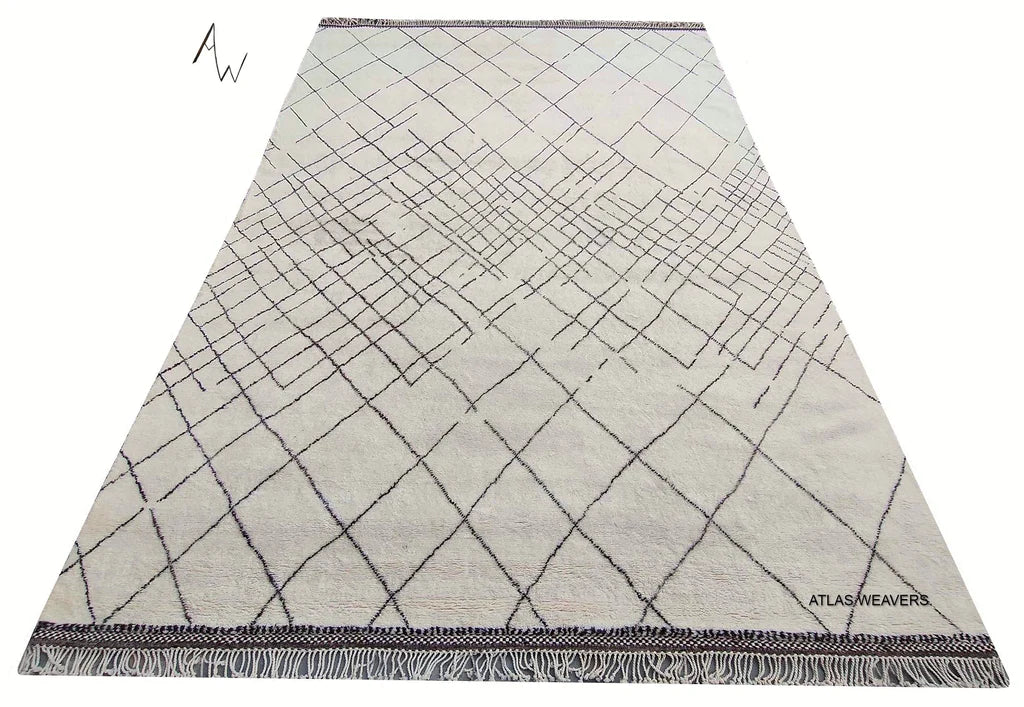Berber weave of the atlas mountains and Moroccan rugs in rural areas
Moroccan rugs in rural areas
Weaving still follows the rhythm of village life. The men of the village tend the sheep while the women do the weaving, besides carrying out the preparatory steps such as washing, spinning and dyeing. For these women, who sing together and tell tales of superstition as they work, weaving is a skill that can increase their 'dowry price ' substantially. Stylistically, the rugs of these villages share an earthy simplicity and graphic boldness, despite the fact that the weavers may use entirely different colours and motifs. To the collector or connoisseur of Moroccan rugs and textiles, these are the most valuable. Largely flat-woven, they are often embellished with symmetrical knots. Colour is used in strong bands across the rug. In addition, or sometimes instead, Moroccan kilims feature symbols arranged in bands, as if to mimic the ubiquitous stripe. Broadly speaking, the classic flat stripes woven predominantly in the south are referred to as GLAOUA, a term derived from the name of the most powerful Berber tribe in south Morocco.
The urban weaving tradition , most probably growing out of the influx of craftsmen after the fall of Granada in 1492, is responsible for an entirely different product . The style of the rugs and carpets produced in Morocco's cities inspires imaginations and motifs and colours are observations.
Often knotted as opposed to flat-woven, these more sumptuous but less original designs are distinguished by the symmetrical placement of their geometric and floral motifs, their clearly defined borders and their quite pronounced dominant colour, the most popular of which is red.
Whether of rural or urban origin, Moroccan rugs are the product of a unique country and people , whose sense of beauty was poignantly celebrated by Delacroix: They are closer to nature in a thousand ways, their dress, woven Moroccan rugs is a beauty that has to share everything. The Berber hand knotted Moroccan rugs often have a bohemian style of colors and designs.


